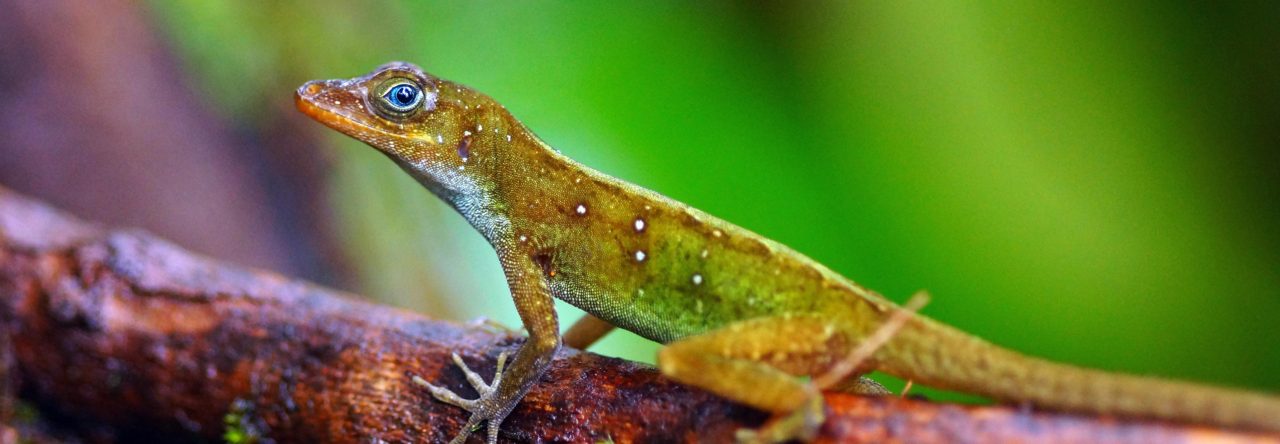The study of geographic variation has long been a foundation of evolutionary biology. As Martha Muñoz explained, in recent years attention has focused on whether geographic variation is the first stage in the process of speciation resulting from divergent selective pressures. Making the case for such ecological speciation requires demonstrating the occurrence of divergent selective pressures correlated with environmental differences and that the resulting phenotypic differences lead to a reduction in genetic exchange among populations in different populations.
Martha reported on a study of the highly variable Guadeloupean anole, Anolis marmoratus. Detailed population level sampling confirmed that differences in body color correlate with environmental differences, with bluer populations in wetter habitats. These results strongly suggest the role of divergent natural selection as the cause, particularly because the differences were replicated across two different transects. Moreover, the fact that the color differences occur only in males suggests a role for divergent sexual selection.
Coalescent analyses of molecular genetic differences suggested that these differences occurred in the presence of gene flow, i.e., a parapatric model of divergence, rather than in allopatry. However, estimates of ongoing gene flow find no evidence of reduced gene flow across environmental borders. In other words, even though selection is driving phenotypic differences, these differences are not leading to a reduction in genetic exchange–selection does not appear to be leading to speciation, contrary to the ecological speciation hypothesis.
These results are in agreement with studies on several other Lesser Antillean anoles. Martha pointed out that in situ cladogenetic speciation only occurs in anoles on the large islands in the Caribbean, suggesting that the lack of opportunity for allopatry on small islands precludes speciation from occurring, even in the presence of strong divergent selection.
These results were recently published in Molecular Ecology and are further discussed in a previous post.
- Evolution in Real Time on Lizard Island - March 23, 2025
- Spider Snags Adult Anolis osa - March 22, 2025
- An Homage to the Green Anoles of New Orleans - March 21, 2025



James (Skip) Lazell
It would be interesting to look at some isolated, insular forms like kahouannensis and see if they have speciated further. Certainly they show no obvious greater degree of difference.